Industrial Equipment
What is an RTG Crane? Popular Types of RTG Cranes Today
Nowadays, RTG cranes are widely used in cargo handling operations at seaports and warehouses. With the ability to move flexibly on rubber tires and improve work efficiency, RTG cranes have become an indispensable part of the modern logistics industry. Join THACO INDUSTRIES to learn more about “What is an RTG crane? Popular types of RTG cranes today” through the article below.
What is an RTG crane?
An RTG crane (short for Rubber-Tired Gantry Crane) is a type of mobile crane commonly used in seaports and warehouse areas for loading and unloading containers. Thanks to its smart design and flexibility, RTG cranes play an important role in improving the efficiency and safety of logistics operations.
Outstanding features
- Solid steel frame: Made of high-strength steel, ensuring the ability to lift heavy loads of up to 65 tons, meeting the requirements of handling large containers.
- Four flexible wheels: Allow the crane to move easily on different terrains, from hard surfaces to sandy ground, adapting to a wide range of working environments.
- Modern lifting system: Includes an automatically controlled crane hook and winch, enabling precise and safe lifting and lowering of containers while minimizing risks.
- Smart control system: Integrates advanced features such as auto-positioning, height and speed adjustment, helping optimize performance and save time.
Advantage
- High productivity: Rapid container handling increases the circulation speed of goods, contributing to the overall efficiency of ports and warehouses.
- Flexibility: Mobile design allows the crane to access multiple locations, optimizing container arrangement and movement.
- Optimal safety: Advanced safety systems and high automation minimize accident risks, ensuring the safety of both operators and cargo.
- Economic efficiency: Consumes less fuel than other crane types, reducing operating and maintenance costs.
Popular types of RTG cranes today
Currently, there are many types of RTG cranes in use to meet diverse cargo handling needs. Below are some of the most common:
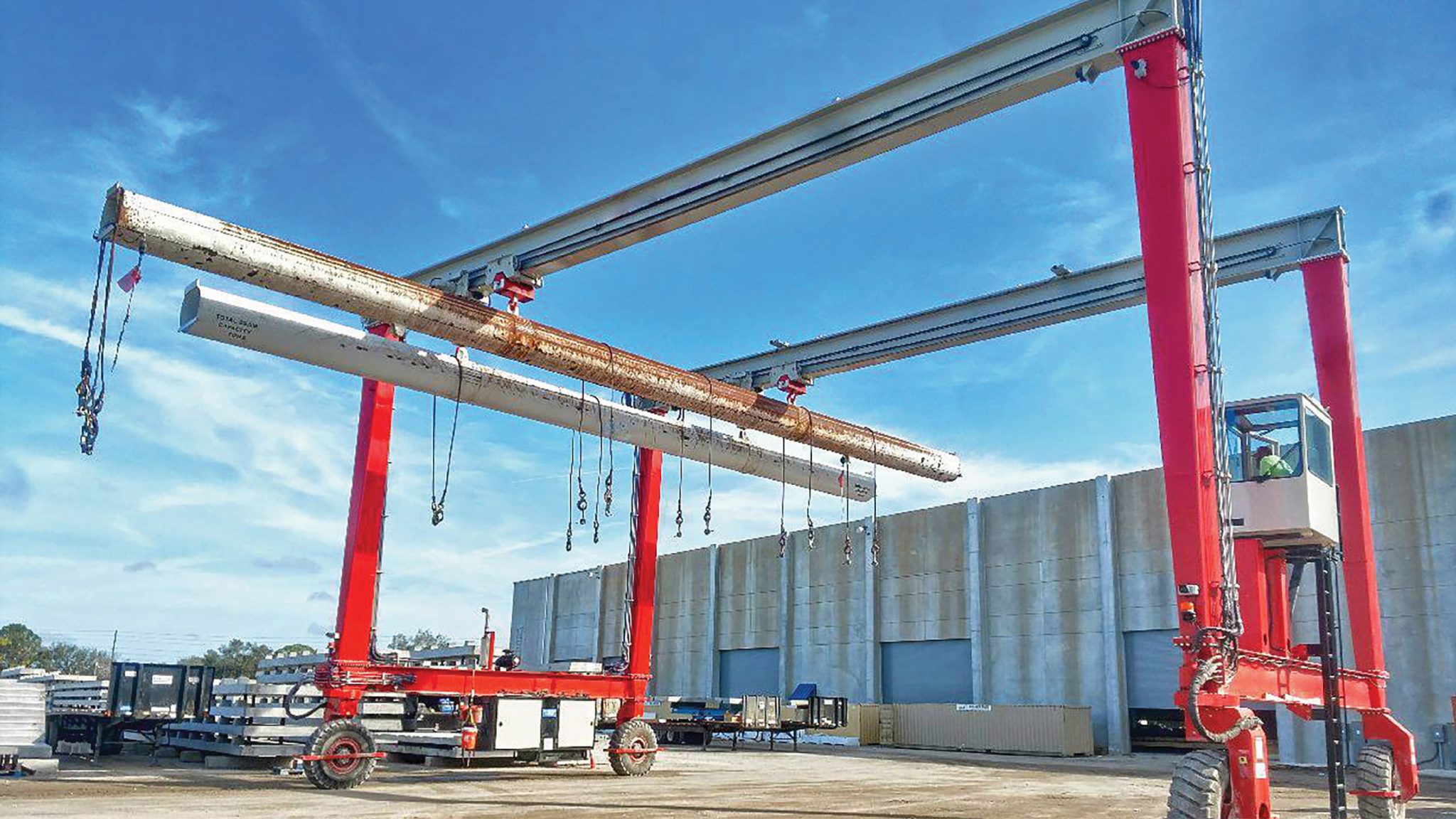
Electric RTG
Developed to replace traditional fuel- or diesel-powered RTGs, e-RTG cranes run entirely on electricity. This reduces harmful emissions and lowers operating costs.
Key features include:
- Powered by electricity
- Suitable for areas with strict environmental requirements, such as noise-controlled zones
- Produces less noise and fewer emissions compared to diesel RTGs
In addition, e-RTGs are often equipped with smart technologies and automation systems to optimize performance and streamline operations. This enhances productivity while minimizing incidents. With these advantages, e-RTGs are a smart choice for businesses and customers in cargo handling.
THACO INDUSTRIES specializes in OEM processing and assembly of high-quality e-RTG cranes in Vietnam. Contact us for customized solutions.
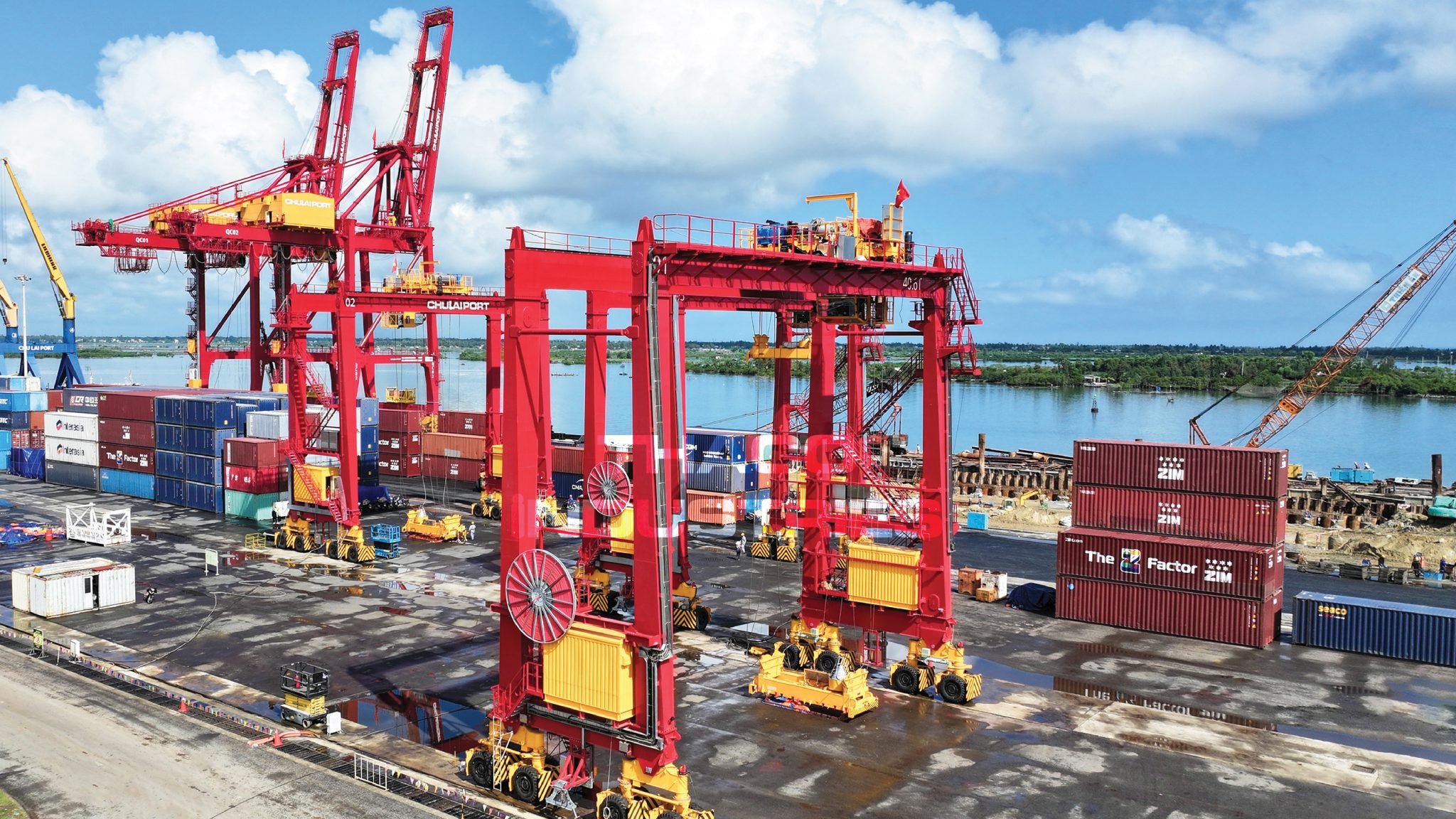
Single-Girder RTG
- Single main girder beam
- Suitable for small and medium warehouses
- Lifting capacity: 20–40 tons
- Lower investment cost compared to double-girder RTGs
Double-Girder RTG
- Two main girder beams
- Suitable for large warehouses
- Lifting capacity: 40–65 tons
- Greater stability and mobility compared to single-girder RTGs
Diesel RTG
- Powered by diesel engines
- Suitable for areas without a stable power supply
- Can operate independently from the electrical infrastructure
Automated RTG (ARTG)
- Computer-controlled, driverless operation
- Increases efficiency and accuracy
- Minimizes accident risks and labor costs
Other specialized types include:
- Rail-Mounted Gantry Crane (RMG): Operates on rails
- RTG Truss Crane: Features a truss steel structure
- Stackable RTG: Designed to save space by stacking
Structure of an RTG gantry crane
The structure of an RTG gantry crane includes the following main parts:
- Main frame: The primary load-bearing structure, made of high-strength steel. It consists of two bases with wheels and a main beam that supports other components.
- Trolley: Moves along the main beam, controlled by electric or hydraulic systems. Carries the crane hook and winch for lifting and lowering containers.
- Crane hook: Used to secure and lift containers, designed for one or more containers at a time.
- Winch: Powers the lifting and lowering of the crane hook.
- Control system: Manages the movement of the crane, trolley, hook, and winch. Can be operated manually or automatically.
- Electrical system: Supplies power to crane components, including motors, wiring, and electrical cabinets.
- Safety system: Includes brakes, alarms, and load limiters to ensure operator and cargo safety.
Optional equipment includes GPS positioning, surveillance cameras, and air conditioning systems.
RTG gantry crane parameters
- Lifting capacity: 16–65 tons, depending on model and application.
- Lifting height: 6–50 meters, suitable for stacking containers in yards or on ships.
- Reach: 10–38 meters, enabling access to containers in different positions.
- Span (aperture): 7–30 meters, adaptable to container sizes.
- Working mode: Classified according to FEM standards (A2–A8). Determines performance and lifespan.
- Standards: Common references include FEM 1001 and TCVN 4244-2005.
- Travel speed: Typically 0–30 m/min, ensuring efficient container handling.
- Electrical system: Supplies adequate voltage and power for crane operation.
- Safety system: Brakes, alarms, and load limiters for maximum protection.
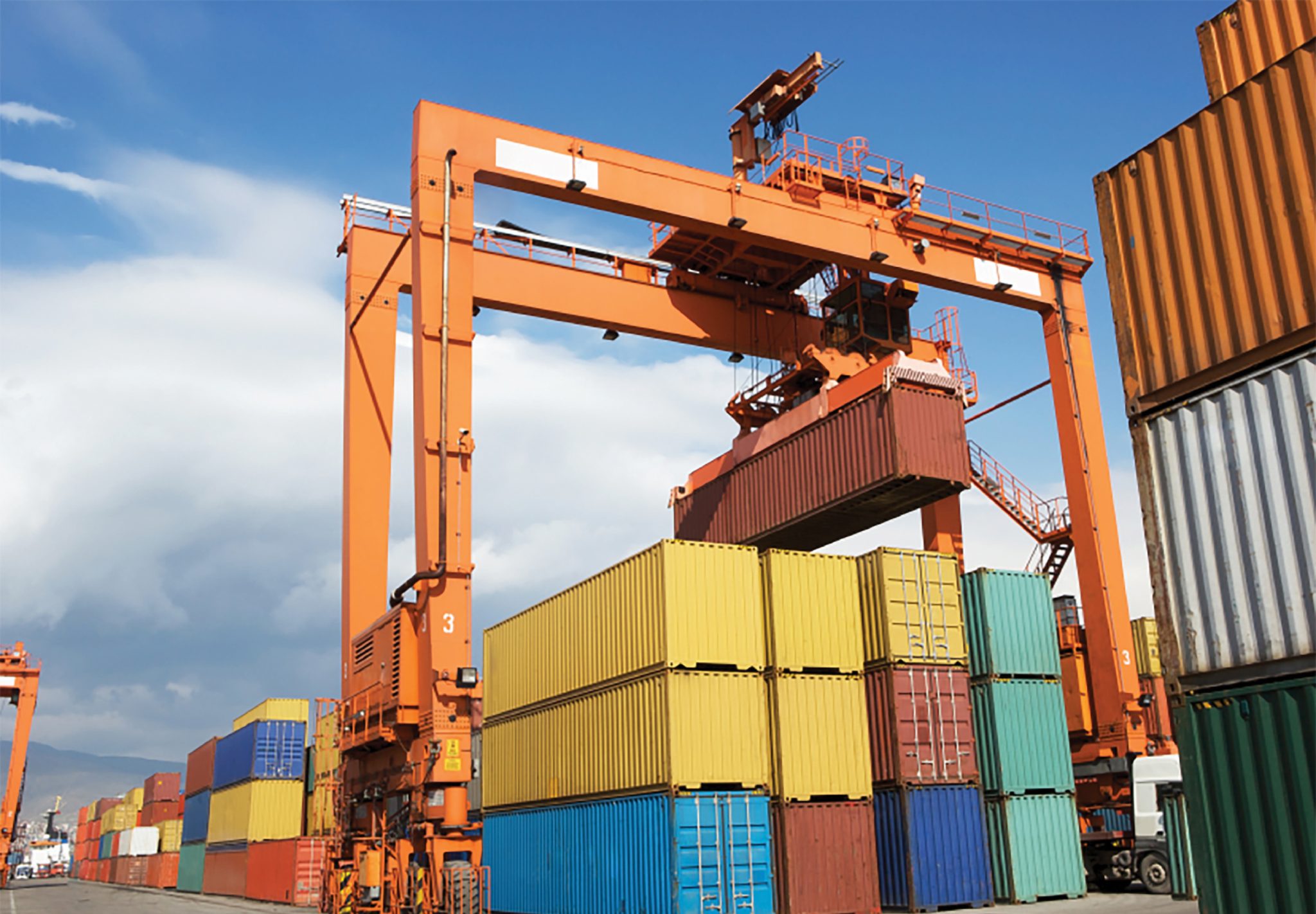
Comparison of RTG cranes and e-RTG cranes
RTG (Rubber-Tired Gantry) and e-RTG (Electric Rubber-Tired Gantry) cranes both serve container handling at ports and terminals, but they differ in power source, efficiency, and environmental impact.
| Criteria | RTG Crane | e-RTG Crane |
| Energy source | Diesel fuel; higher emissions and noise | Electricity (via cable or batteries); low emissions, and quieter |
| Operating costs | Lower initial cost but higher long-term fuel and maintenance expenses | Higher upfront cost but lower long-term operating costs |
| Mobility | Highly mobile within port areas | Mobile but may be limited if tethered to a power supply |
| Environmental impact | Higher CO₂ emissions and noise | Environmentally friendly, quieter, lower emissions |
| Application | Ideal for ports without electrical infrastructure or with budget constraints | Suitable for ports focused on sustainability and emission reduction |
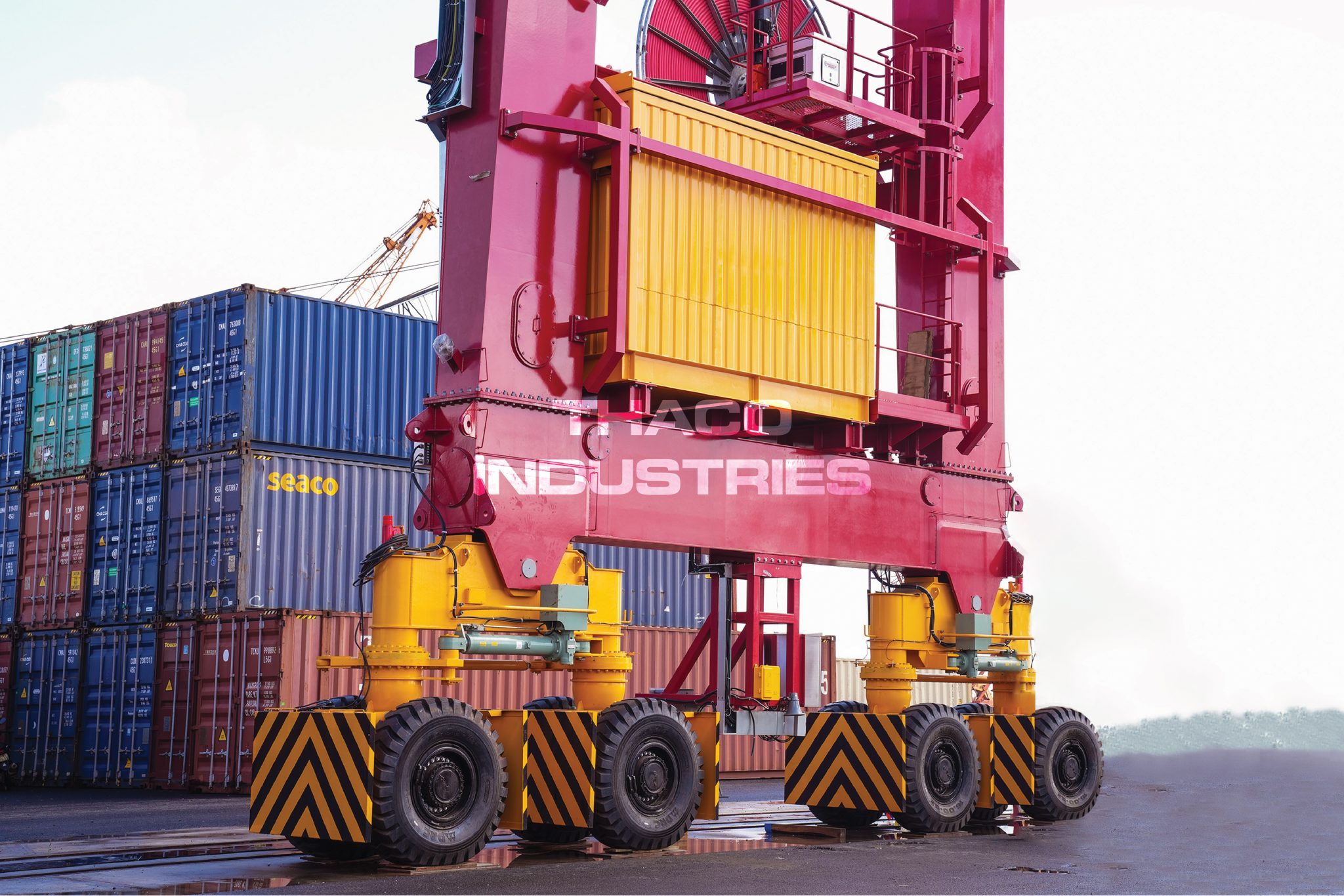
Thus, it can be seen that e-RTG cranes have many advantages over RTG cranes. The development of e-RTG gantry cranes not only helps improve operating efficiency, reduce costs but also helps protect the environment.
See more: What is the Difference Between RTG and STS Cranes
THACO INDUSTRIES – Vietnam’s leading OEM e-RTG partner
As a member of THACO, THACO INDUSTRIES is a pioneer in mechanics and supporting industries, operating at a leading scale in Vietnam. With state-of-the-art facilities and advanced machinery, THACO INDUSTRIES is a trusted OEM partner for e-RTG crane and crane parts manufacturing and assembly.
Technical details of e-RTG crane at THACO INDUSTRIES
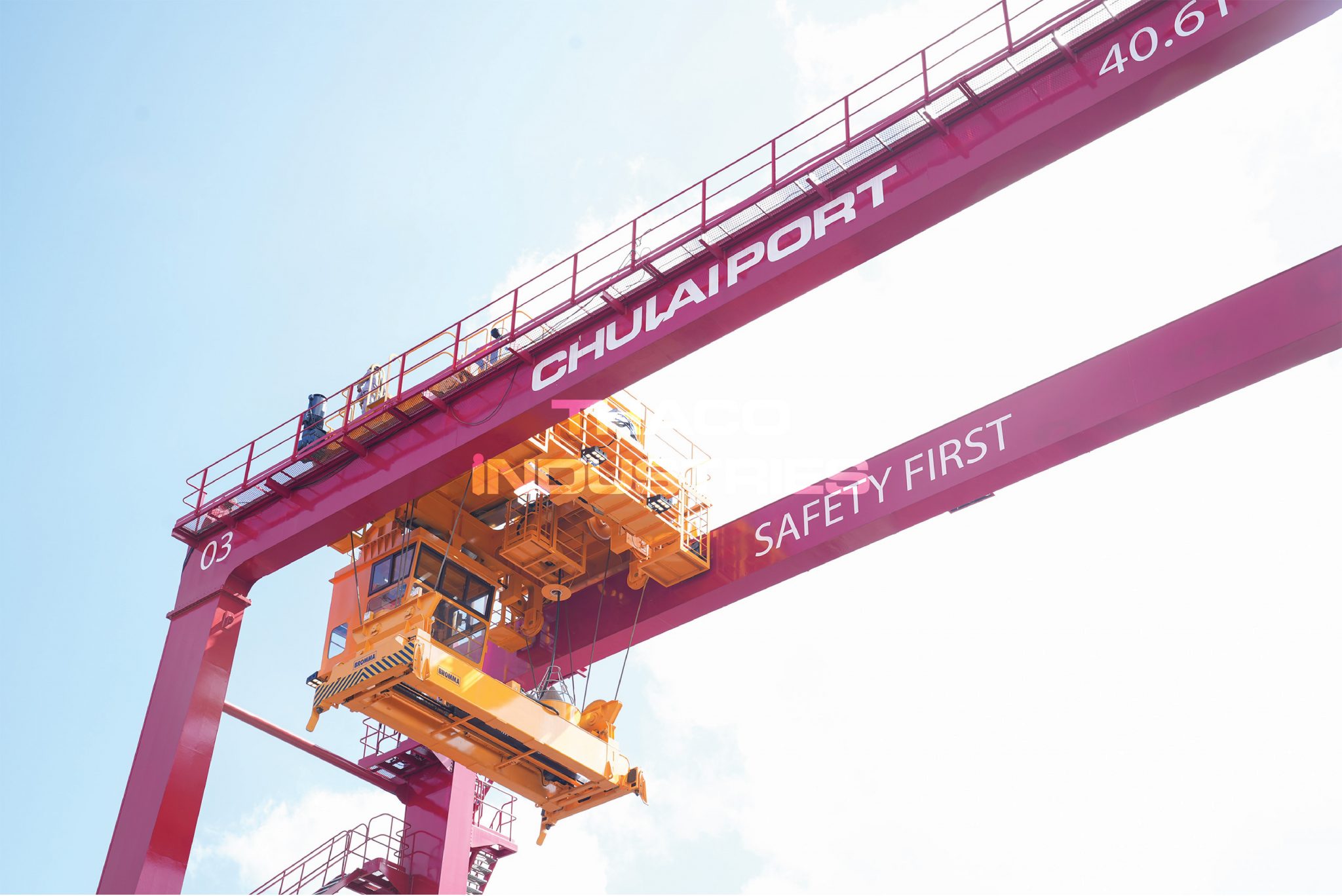
The e-RTG crane product has a total weight of 160 tons, a lifting height of up to 18.3 m with a lifting capacity under the beam of 40.6 tons. The crane has a lifting speed of 23 m/min, a trolley moving speed of 70 m/min and a maximum crane moving speed of 135 m/min. Suitable for 20ft and 40ft containers.
Standards for using steel for e-RTG crane processing
At THACO INDUSTRIES, e-RTG crane products and components use steel materials that meet the following standards:
- Q345D – GB/T 1591-2008 standard: Good weldability, ensuring high mechanical properties and better load-bearing structure than ordinary carbon steel. In addition, stable low temperature impact resistance makes the structure highly reliable in complex environments.
- S45C – Japanese standard JIS G4051: Good machinability before heat treatment, and high hardness and strength after heat treatment. Medium carbon content (0.42 – 0.5) helps the product balance between strength and ductility, providing uniform mechanical properties ensuring stability for load-bearing applications (shafts, beams, gears).
- Main structural components of cranes such as: Girder, leg, sill beam, trolley, gantry used thép A572 Grade 50 (A572 Gr50) steel. This is a high-strength steel, designed to meet the needs of load-bearing applications such as bridges, buildings, and especially port cranes. In addition, with its relative corrosion resistance, A572 Grade 50 provides a certain level of protection against environmental factors, making it the preferred choice for structures exposed to harsh conditions but requiring reasonable costs.
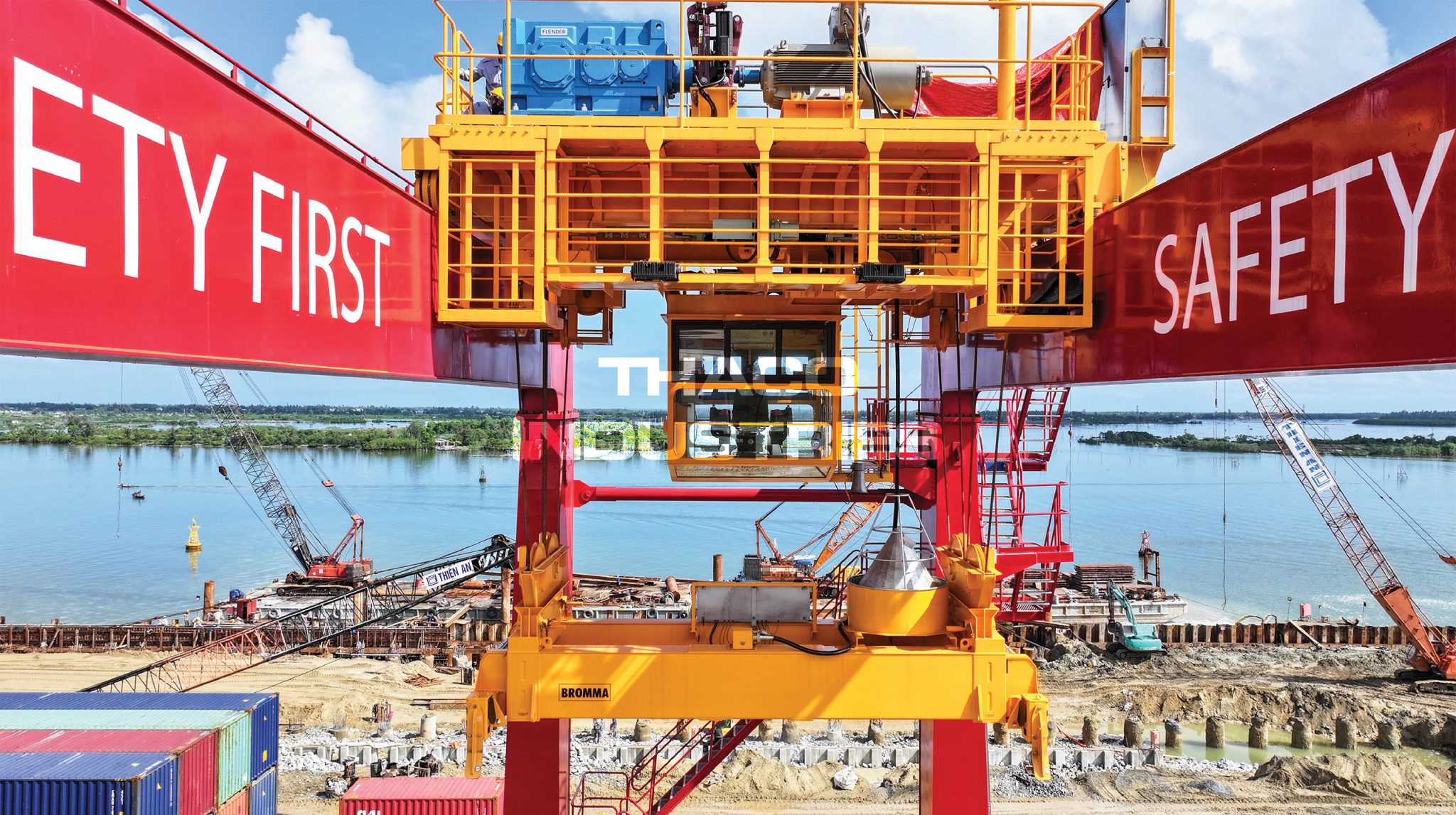
Hopefully, the article will provide useful information for readers. For advice on ordering and installing e-RTG gantry crane products at THACO INDUSTRIES, please contact the hotline: 0348620063.


